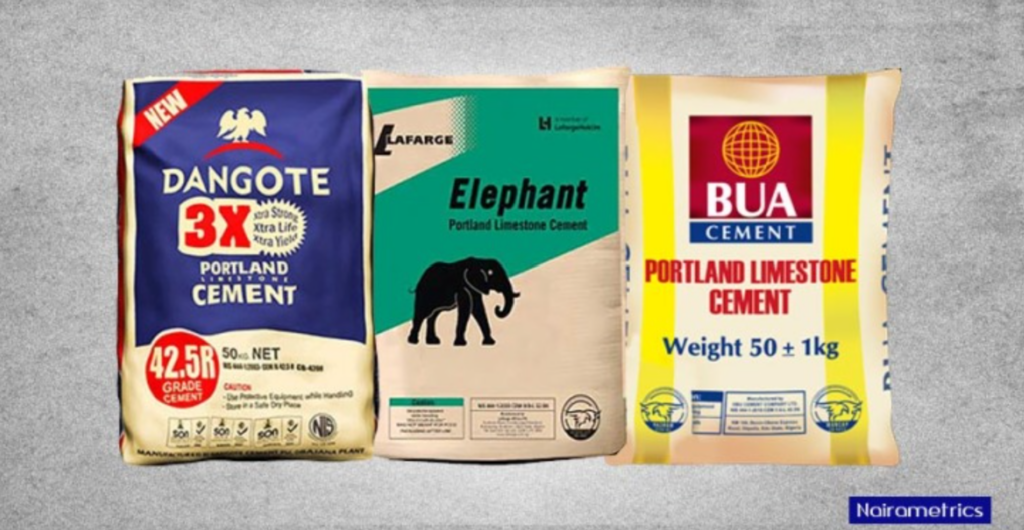Unlike other companies, especially those in the consumer goods sector, cement producers have shown resilience in the face of foreign exchange losses, maintaining profitability in the first nine months of the year.
In the first nine months of the year, the three major cement producers; BUA Cement, Dangote Cement, and WAPCO (Lafarge) witnessed a significant increase in their foreign exchange losses averaging 441% YoY to N135.375 billion.
Nevertheless, despite these foreign exchange losses, the three companies, led by Dangote Cement accumulated a pre-tax profit of N478.659 billion, representing an average year-on-year growth of 15.28%.
Nigeria transitioned to a new government in the second quarter following its 7th election cycle in March. Since then, the country has been navigating a series of policy reforms introduced by the new administration.
The weakening of the currency due to the naira float and the removal of the petrol subsidy have continued to exert pressure on operating costs, driving up commodity prices and inflation.
As a result, these factors have had a significant impact on the economy, the retail end of the market, and consequently, the profitability of companies.
Just like many other companies, cement producers have also been impacted by the Naira devaluation and other macroeconomic headwinds, which are evident in their sales volumes and foreign exchange losses.
Dangote Cement, for example, noted that sales volume from its Nigerian operations declined by 10.9% to 12 million metric tons (Mt) in 9M 2023 from 13.5Mt in the corresponding period of 2022. Domestic sales volume alone was 11.5Mt, marking a 10.3% year-on-year decrease.
According to Dangote Cement, this decline underscores the influence of election uncertainty, financial constraints, currency devaluation, and adverse weather conditions that characterized the period.
Out of the collective recorded foreign exchange loss of N135.375 billion, Dangote Cement accounted for a significant N99.016 billion.
According to the company, the net foreign exchange loss of ₦99.016 billion from its foreign currency obligations reflects the devaluation of the naira from ₦461.1/$ at the end of 2022 to ₦776.8/$ at the end of September 2023.
BUA Cement also saw a substantial increase in its foreign exchange loss, which surged by 412% year-on-year to N26.936 billion, while WAPCO’s foreign exchange loss spiked by 874.28% to N9.424 billion during the same period under review.
Despite these challenges, the three companies recorded strong pre-tax profits. Dangote reported a pre-tax profit of N404.890 billion, reflecting a 20.54% year-on-year growth.
WAPCO saw its pre-tax profit increase by 13.36% to N61.156 billion, while BUA Cement recorded a marginal decline of 3.45% to N85.748 billion.
One of the contributing factors to this strong bottom-line performance among these cement companies is the strength of their topline and midline profit margins.
On average, the companies achieved a gross profit margin of 51% and an operating profit margin of 32%. These figures typically signify robust and sound profit margins.
The elevated gross profit and operating profit margins are strong indicators of the companies’ financial well-being and efficiency. They reflect the companies’ capacity to sustain profitability from their core operations, without yet factoring in additional costs such as taxes and interest.
It’s noteworthy that these companies have maintained strong gross profit margins even when their costs of sales have outpaced revenue growth.
This could be attributed to effective pricing strategies, passing on elevated costs to customers and efficiently controlling and containing costs.
For instance, Dangote Cement reported a significant 5.9% increase in 9-month EBITDA to ₦508.1 billion in its Nigeria operations, highlighting effective cost management as a key contributing factor
Alternatively, this ability to maintain profit margins can be attributed to factors such as enjoying near-monopoly status, product inelastic demand, wielding significant market power, etc. In these circumstances, customers are typically willing to pay a premium for the product, irrespective of cost increases.
Nevertheless, it is necessary to highlight that depending on passing costs to customers, due to the product’s near-monopoly/inelastic demand nature, may not offer a sustainable long-term strategy as maintaining profitability, in the long run, might be difficult with externalities such as the surging foreign exchange losses.
This has become more necessary looking at the companies’ 9M 2023 results. Except for WAPCO, both Dangote Cement and BUA Cement experienced declines in their pre-tax profit margins, with Dangote Cement’s pre-tax margin decreasing by 180 basis points to 26.73% in 9M 2023, and BUA Cement’s pre-tax margin declining by 24.51% to 25.53%.
But it is indeed encouraging to observe that the companies have taken proactive steps in this regard. For instance, during BUA Cement’s H1 2023 conference call, the company revealed its commitment to effectively manage increased costs, making substantial investments in state-of-the-art pyro-processing systems, to reduce production costs.
Additionally, the company has outlined plans to invest in Compressed Natural Gas (CNG)–powered trucks as a strategic approach to lower distribution costs
On the other hand, WAPCO has undertaken measures to enhance both cost-effectiveness and environmental responsibility.
They’ve introduced a pilot program that features electric-powered trucks in their cement operations in Ewekoro, Ogun State and has expanded their fleet by adding more gas-powered trucks.
These proactive initiatives demonstrate the companies’ commitment to effective cost management, which can have a positive impact on their profitability.
For investors, this signals a focus on maximizing returns, and these measures may be seen as a step toward ensuring sustainable profitability.
In addition, it is equally important to consider revenue growth to maintain the top and the price-to-sales ratio provides valuable insights into the varying investor expectations among the companies.
In this context, BUA Cement stands out with the highest price-to-sales ratio of 9.17. This suggests that investors have exceptionally high expectations for the company’s future revenue growth and profitability.
